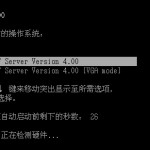为什么不建议客户把业务数据存放到SYSTEM表空间中,一直想通过试验的数据来说明问题,今天见老熊的邮件和同事的blog(为什么不要把用户表存储到SYSTEM表空间)来说明把业务数据存放在SYSTEM表空间中效率的影响
数据库版本
SQL> select * from v$version; BANNER -------------------------------------------------------------------------------- Oracle Database 11g Enterprise Edition Release 11.2.0.3.0 - 64bit Production PL/SQL Release 11.2.0.3.0 - Production CORE 11.2.0.3.0 Production TNS for Linux: Version 11.2.0.3.0 - Production NLSRTL Version 11.2.0.3.0 - Production
创建测试环境
SQL> conn chf/xifenfei Connected. SQL> create table t_xifenfei_u(id number) tablespace users; Table created. SQL> create table t_xifenfei_s(id number) tablespace system; Table created. SQL> select table_name,tablespace_name from user_tables; TABLE_NAME TABLESPACE_NAME ------------------------------ ------------------------------ T_XIFENFEI_U USERS T_XIFENFEI_S SYSTEM
非系统表空间测试
SQL> select STATISTIC#,NAME from v$statname where name='CPU used by this session';
STATISTIC# NAME
---------- ----------------------------------------------------------------
17 CPU used by this session
SQL> select * from v$mystat where STATISTIC#=17;
SID STATISTIC# VALUE
---------- ---------- ----------
189 17 33
SQL> set timing on
SQL> begin
2 for i in 1..200000 loop
3 insert into t_xifenfei_u values(i);
4 end loop;
5 end;
6 /
PL/SQL procedure successfully completed.
Elapsed: 00:00:05.97
SQL> select * from v$mystat where STATISTIC#=17;
SID STATISTIC# VALUE
---------- ---------- ----------
189 17 629
Elapsed: 00:00:00.00
测试结果显示,非系统表空间中的表插入200000条记录,使用时间为5.97秒;使用CPU为629-33=596
系统表空间测试
SQL> begin
2 for i in 1..200000 loop
3 insert into t_xifenfei_s values(i);
4 end loop;
5 end;
6 /
PL/SQL procedure successfully completed.
Elapsed: 00:00:14.00
SQL> select * from v$mystat where STATISTIC#=17;
SID STATISTIC# VALUE
---------- ---------- ----------
189 17 2019
Elapsed: 00:00:00.00
测试结果显示,对系统表空间中的表插入200000条记录,使用时间为14秒;使用CPU为2019-629=1390,基本上可以看出来无论是CPU消耗还是执行时间上,系统表空间占用都是非系统表空间两倍以上
分析原因
SQL> conn / as sysdba
Connected.
SQL> select * from (SELECT i.ksppinm NAME, i.ksppity TYPE, v.ksppstvl VALUE,
2 v.ksppstdf isdefault FROM x$ksppi i, x$ksppcv v WHERE i.indx = v.indx AND
3 i.ksppinm LIKE '/_%%' ESCAPE '/') where name like '%db_alw%';
NAME TYPE VALUE ISDEFAULT
------------------------------ ---------- --------------- ---------
_db_always_check_system_ts 1 TRUE TRUE
SQL> alter system set "_db_always_check_system_ts"=false;
System altered.
SQL> conn chf/xifenfei
Connected.
SQL> select * from v$mystat where STATISTIC#=17;
SID STATISTIC# VALUE
---------- ---------- ----------
127 17 1
Elapsed: 00:00:00.01
SQL> begin
2 for i in 1..200000 loop
3 insert into t_xifenfei_s values(i);
4 end loop;
5 end;
6 /
PL/SQL procedure successfully completed.
Elapsed: 00:00:06.03
SQL> select * from v$mystat where STATISTIC#=17;
SID STATISTIC# VALUE
---------- ---------- ----------
127 17 582
通过这里可以发现,修改_db_always_check_system_ts=false之后,system表空间的操作基本上和非系统表空间所差无几(执行时间6.01秒,占用CPU 581=582-1)
在数据库默认情况下db_block_checking和db_block_checksum的值无论如何设置都不能对于SYSTEM表空间生效,也就是说SYSTEM表空间在没有修改_db_always_check_system_ts=false之前,对所有的块操作都要进行db_block_checking和db_block_checksum验证,从而使得数据块的操作效率较非SYSTEM表空间低下。对于一些插入较为频繁的aud$、FGA_LOG$、DEF$_AQCALL等表建议迁移到其他表空间
备注说明
DB_BLOCK_CHECKING
DB_BLOCK_CHECKING specifies whether or not Oracle performs block checking for database blocks. Values: OFF or FALSE No block checking is performed for blocks in user tablespaces. However, semantic block checking for SYSTEM tablespace blocks is always turned on. LOW Basic block header checks are performed after block contents change in memory (for example, after UPDATE or INSERT statements, on-disk reads, or inter-instance block transfers in Oracle RAC). MEDIUM All LOW checks and full semantic checks are performed for all objects except indexes (whose contents can be reconstructed by a drop+rebuild on encountering a corruption). FULL or TRUE All LOW and MEDIUM checks and full semantic checks are performed for all objects. Oracle checks a block by going through the data in the block, making sure it is logically self-consistent. Block checking can often prevent memory and data corruption. Block checking typically causes 1% to 10% overhead,depending on workload and the parameter value. The more updates or inserts in a workload, the more expensive it is to turn on block checking. You should set DB_BLOCK_CHECKING to FULL if the performance overhead is acceptable. For backward compatibility, the use of FALSE (implying OFF) and TRUE (implying FULL) is preserved.
DB_BLOCK_CHECKSUM
DB_BLOCK_CHECKSUM determines whether DBWn and the direct loader will calculate a checksum (a number calculated from all the bytes stored in the block) and store it in the cache header of every data block when writing it to disk. Checksums are verified when a block is read - only if this parameter is TYPICAL or FULL and the last write of the block stored a checksum. In FULL mode, Oracle also verifies the checksum before a change application from update/delete statements and recomputes it after the change is applied. In addition, Oracle gives every log block a checksum before writing it to the current log. Starting with Oracle Database 11g, most of the log block checksum is done by the generating foreground processes, while the LGWR performs the rest of the work, for better CPU and cache efficiency. Prior to Oracle Database 11g, the LGWR solely performed the log block checksum. If this parameter is set to OFF, DBWn calculates checksums only for the SYSTEM tablespace, but not for user tablespaces. In addition, no log checksum is performed when this parameter is set to OFF. Checksums allow Oracle to detect corruption caused by underlying disks, storage systems, or I/O systems. If set to FULL, DB_BLOCK_CHECKSUM also catches in-memory corruptions and stops them from making it to the disk. Turning on this feature in TYPICAL mode causes only an additional 1% to 2% overhead. In the FULL mode it causes 4% to 5% overhead. Oracle recommends that you set DB_BLOCK_CHECKSUM to TYPICAL. For backward compatibility the use of TRUE (implying TYPICAL) and FALSE (implying OFF) values is preserved.



